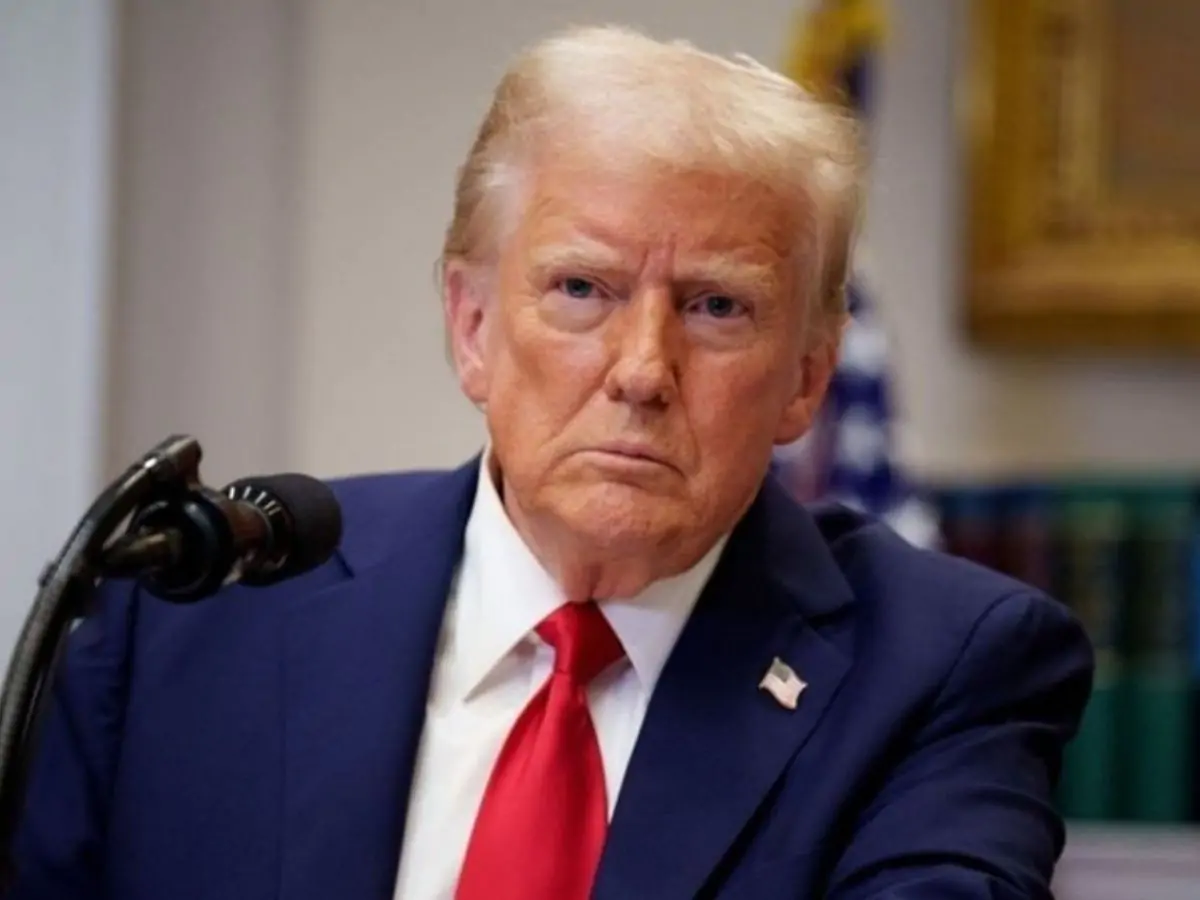
Trump Denies Firing Fed Chair Powell But the Pressure Is Mounting
The president says he’s not planning to fire the head of the Federal Reserve. But depending on who you ask—and when he was asked, that answer might not be so clear.
Speaking to reporters on Wednesday, President Donald Trump denied a swirling rumour that he was preparing to oust Federal Reserve Chair Jerome Powell, a man he once appointed but has since frequently criticized. “No, we’re not planning on doing it,” Trump said from the White House during a meeting with Bahrain’s prime minister. Then, without missing a beat, he added, “I don’t rule out anything, but I think it’s highly unlikely—unless he has to leave for fraud.”
That comment came just hours after reports emerged that Trump had told a private gathering of Republican allies he was gearing up to remove Powell, possibly even having gone so far as to draft a dismissal letter. The New York Times broke the story, adding another layer of confusion to an already tense relationship between the White House and the nation’s top monetary authority.
Powell, for his part, has said little publicly about the drama. But his recent appearances—both in Congress and before the press—suggest a man determined to stay the course.
A Growing Rift
The rift between Trump and Powell is nothing new. Trump has long fumed over the Fed’s reluctance to slash interest rates, arguing that high borrowing costs are putting a drag on the economy. The federal funds rate currently sits between 4.25% and 4.5%, and Trump wants it lowered by as much as 3 percentage points—a dramatic shift that he claims could save the country $1 trillion in interest payments.
“Powell’s doing a terrible job,” Trump told reporters. “He cost us a lot of money, but we fight through it.” He went on to blame the central bank’s tight monetary policy for hurting homebuyers and suppressing residential construction. “It does hurt people wanting to get a mortgage, people wanting to buy a house,” he added.
But here’s the rub: The president cannot remove the Fed chair over policy disagreements. The Federal Reserve is an independent institution, and its chair can only be removed “for cause”—which typically means misconduct or inability to fulfill duties, not a clash over interest rates.
Still, Trump hinted at change ahead, saying: “We get to make a change in the next eight months or so.” Powell’s current term as chair ends in February 2026, and Trump would have the chance to nominate a replacement if re-elected in November.
A Different Kind of Spending Fight
While the president’s main frustration is with interest rates, there’s another issue now bubbling to the surface: how the Fed spends its own money.
Specifically, a $2.5 billion renovation project has come under fire. The central bank is renovating its historic headquarters near the National Mall, along with an adjacent vacant property it acquired years ago. Construction delays, asbestos removal, and contaminated soil have all driven up costs—and now, the White House is using it as a new reason to question Powell’s leadership.
Last week, Russell Vought, director of the Office of Management and Budget, sent Powell a letter criticizing the ballooning renovation expenses and calling the overruns “extremely troubling,” according to Reuters. Powell responded by asking the Fed’s internal watchdog—the inspector general—to review the project, a move seemingly aimed at showing transparency and heading off further criticism.
Capitol Hill Pushback
On June 24, Powell faced a grilling on Capitol Hill during a hearing before the House Financial Services Committee. Lawmakers on both sides of the aisle pressed him on the Fed’s decision to keep interest rates steady since December 2024.
Democratic Rep. Rashida Tlaib of Michigan accused the Fed of worsening the housing crisis. “We’re talking about a housing crisis that is getting worse right now,” she said. “I come from a community… that is being impacted by the current framework you’re putting together. I feel like it’s going to have long-term effects.”
Powell didn’t flinch. “Actually, we think the very best thing we can do is to fully restore price stability at the aggregate level,” he said, calmly but firmly. “That will be the best thing for homeowners and for homebuilders, and for everybody else, in the long run.”
Throughout the hearing, Powell reiterated that the Fed remains focused on its dual mandate: keeping inflation in check while supporting a strong labor market. Cutting interest rates too soon, he warned, could derail progress on inflation, which—after a brutal spike in 2022—has only recently begun to level off.
What Comes Next
The Fed’s next policy meeting is set for July 29–30, and while no rate cut is expected, markets and political observers alike will be watching for any signals of a shift. Realtor.com’s senior economist Jake Krimmel says Powell is still “in wait-and-see territory” but hasn’t ruled out a cut if economic indicators start flashing warning signs.
In the meantime, pressure from the White House is unlikely to ease. Trump, never one to shy away from conflict, has made the Fed a frequent punching bag. Whether this latest episode is a genuine threat to Powell’s position or just political theatre remains to be seen.
Either way, the message is clear: Powell may still have the job, but he is walking a narrowing tightrope—with the president waiting, perhaps impatiently, at the other end.



